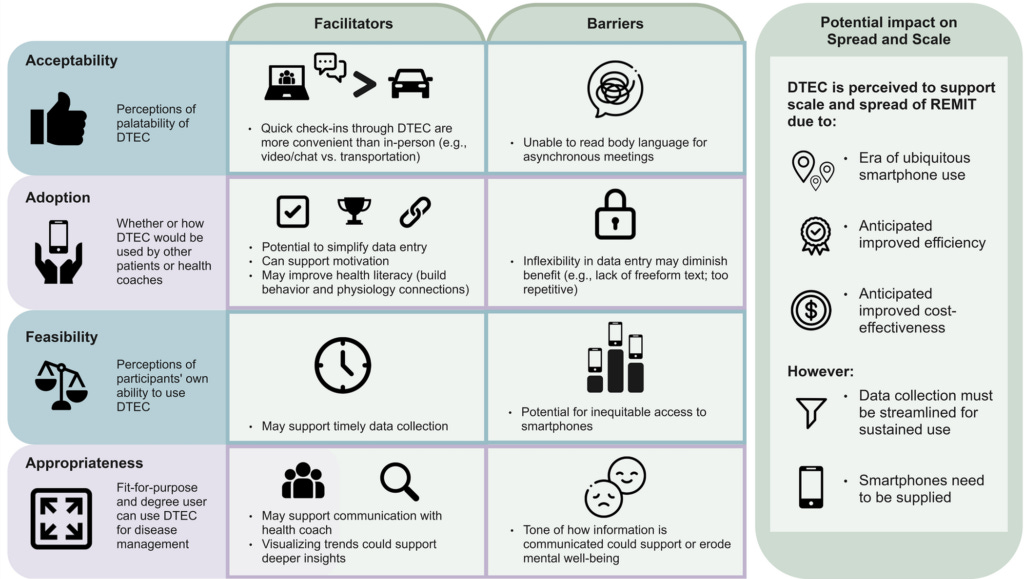The Gut Punch Weekly #3
Calorie-density drives overeating, FDA unveils new front-of-pack warning labels, Metsera announces plans to IPO, and more.
The Ozempic Era, Part II: The Miracle Drug
The drugs work. The weight comes off. Patients report reduced cravings and improved control over their appetites. “These medications create mental headspace,” one obesity medicine specialist with nearly two decades of clinical experience explained to me. “When you’re not constantly battling cravings, when your brain isn’t overwhelmed with intrusive thoughts about food, you finally have the capacity to do the hard work of changing your relationship with eating.”
Hard work is the opposite of a silver bullet. This window of opportunity – this period of reduced cravings and increased control – represents a crucial chance for patients to establish new habits and behaviors. But here’s the critical caveat: GLP-1 drugs aren’t an obesity cure. They only control cravings and addictions while actively taking them. Unless patients use this window to fundamentally change their lifestyle and relationship with food, the cravings will return with a vengeance as soon as they stop the medication.
This caveat transforms GLP-1 drugs from a miracle cure to a maintenance medication. In the worst-case scenario, they’re a life sentence. Like insulin for diabetes or antidepressants for depression, they become part of a long-term strategy for managing chronic disease. “We need to shift our understanding of obesity,” argues another obesity medicine specialist. “This isn’t about willpower or short-term fixes. It’s a chronic disease that requires ongoing treatment, just like hypertension or diabetes.”
But this is where the promise of GLP-1 drugs collides with the harsh realities of American healthcare. The support infrastructure needed to help patients make lasting changes – the behavioral health resources, the nutritional counseling, the coordinated care teams – is largely missing.
GLP-1 drugs have emerged as a panacea for addiction – if you can afford them.
Read more in The Ozempic Era, Part II: The Miracle Drug.
Top Stories
Food Calorie Density Drives Overeating: Investigations by NIH researcher Kevin Hall suggest that energy-dense, hyperpalatable ultra-processed foods can drive overeating and may underpin the obesity crisis.
However, less calorie-dense packaged foods, even if technically ultra-processed, appear less harmful for weight gain.
FDA Unveils Front-of-Pack Nutrition Label: The FDA proposed front-of-package nutrition labels highlighting saturated fat, sodium, and added sugars — using “Low,” “Med,” or “High” tiers — to help consumers make quicker, healthier food choices.
Metsera Announces IPO After Promising Weight Loss Data: A mere 9 months after company launch and following promising Phase IIa results, Metsera announced IPO plans to fund Phase III trials for its ultra-long-acting GLP-1 candidate MET-097i.
GLP-1 Industry Intel
Eli Lilly Stock Falls on Weaker Obesity Sales: Eli Lilly lowered its 2024 revenue guidance, citing slower-than-anticipated demand for its weight loss and diabetes drugs, triggering a nearly 7% stock decline.
Lilly’s Oral Weight-Loss Pill Targeting 2026 Approval: Eli Lilly anticipates regulatory approval as soon as early 2026 for orforglipron, its oral weight-loss candidate, following expected trial data in mid-2025.
Kailera Enters Fray Against Lilly’s Zepbound: Kailera’s HRS9531, a subcutaneous dual agonist of the GLP-1 and GIP receptors, saw a 21% placebo-adjusted weight reduction during Phase II trials.
Medicare Expands Zepbound Coverage for Sleep Apnea: Medicare Part D can cover Eli Lilly’s Zepbound for obstructive sleep apnea, broadening access to the drug, which is currently not covered by Medicare for weight loss.
Pfizer Holds Measured Hope for Obesity Pill: Pfizer remains guardedly hopeful about its once-daily oral obesity candidate danuglipron’s market potential, despite pulling the twice-daily version after Phase IIb results in 2023 showed high toxicity.
Verdiva Bio Debuts with $411M for Next-Gen Obesity Therapies: Verdiva Bio debuted as a clinical-stage cardiometabolic startup, raising $411 million in Series A funding to develop next-generation oral and injectable obesity therapies, including a once-weekly oral GLP-1 program.
Phase 2 Trial Begins for Viking’s Dual-Agonist, Once-Daily Oral Tablet: Viking Therapeutics has started a 13-week Phase 2 trial assessing once-daily oral VK2735’s safety and weight-loss efficacy in obese or overweight adults, expanding its dual GLP-1/GIP agonist pipeline.
Regor’s Oral GLP-1 Hits 5% Weight-Loss Milestone: Regor’s RGT-075 oral GLP-1 receptor agonist showed a 5% placebo-adjusted weight loss with no plateau in a 12-week Phase 2a trial, advancing to a Phase 2b dose-finding study.
‘Found’ Debuts Cheaper Dissolvable GLP-1 Tablet: ‘Found’ launched a dissolvable oral semaglutide tablet for cheaper and more discreet weight-loss treatment, targeting cost-sensitive or needle-averse GLP-1 users.
Food & Wellness Industry Intel
Big Food Scrambles as GLP-1 Curbs Cravings: As new GLP-1 weight-loss drugs curb appetites for ultraprocessed foods, large ‘junk’ food companies scramble to adapt their products to new consumer tastes.
Weight-Loss Drugs Spark Alcohol Slowdown, Smith Sells Diageo: Fund manager Terry Smith exits Diageo — maker of Johnnie Walker, Guinness, and Smirnoff — citing management concerns and the emerging threat popular weight-loss medications like Ozempic pose to alcohol demand.
Private Equity, Insurers Create New Gilded Age for Medicine: Profit-first corporate insurers and private equity funds increasingly dominate healthcare, undermining patient-centric care by treating patients as revenue sources rather than individuals in need.
Fractyl Shows Post-GLP-1 Weight Maintenance Success: Fractyl Health’s new results show that patients discontinuing GLP-1 therapy maintained weight loss one month post-Revita procedure, offering hope for long-term obesity management without ongoing medication.
Noom’s New Tools Boost GLP-1 Persistence, Outcomes: Noom introduced new features—medication tracking, AI-driven meal planner, and dynamic calorie goals—to improve GLP-1 therapy adherence, align with emerging PDURS regulations, and enhance weight-loss outcomes.
Virta Announces $100M Annualized Rev for Weight Loss Platform: Virta Health surpassed $100M in annualized revenue, buoyed by its nutrition-focused weight-loss programs and AI-based clinician tools.
Galderma’s Injectables Show Promise for Medication-Driven Facial Volume Loss: Galderma’s interim data show that combining fillers effectively addresses facial volume loss linked to medication-driven weight reduction, with high patient satisfaction at three months.
Frontline Focus
Commission Calls for Redefining Obesity Beyond BMI: A global commission proposes scrapping BMI metric in favor of assessing body fat distribution and defining obesity as either a chronic disease (clinical) or a risk state (pre-clinical) on a case-by-case basis.
Minority of Companies Cover GLP-1 Obesity Meds, JPM Finds: A JPMorgan survey finds fewer than 50% of large employers currently cover GLP-1 obesity drugs, reflecting ongoing cost and access concerns amid surging demand.
New Poll Highlights Obesity-Drug Hopes, Concerns: IFIC’s latest survey reveals 44% of Americans want to lose weight, with many expressing interest in obesity medications but also voicing concerns about cost and potential side effects.
Off-Label Ozempic Support Divided Amid Safety Fears: Public sentiment on off-label Ozempic prescribing in the US is divided, with concerns about safety and supply instability reducing individuals’ support for off-label use.
GLP-1 Clinical Insights
Digital Coaching Aids Type 2 Diabetes Remission: Patients and health coaches are interested in pairing digital tools with coaching to improve continuity of T2D remission care, though fairness and ease-of-use remain concerns.

Novel Agonist Shown to Slash Food Intake, Weight: GEP44, a chimeric GLP-1/NPY receptor agonist, cut body weight largely via reduced intake rather than increased energy expenditure in high-fat diet rodents.
Wearables Aid Muscle Preservation during Obesity Therapies: Wearable technology can help track and guide personalized interventions that protect muscle mass during weight loss treatments.
Liraglutide Topically Speeds Wound-Healing in Non-Diabetic Mice: Liraglutide, applied topically in normoglycemic mice, accelerates wound healing by promoting angiogenesis and shifting macrophages from pro-inflammatory M1 to pro-reparative M2 phenotypes.
Real-World Tirzepatide Users Show 73% Persistence at 6 Months: A real-world analysis of over 15,000 tirzepatide initiators with T2D shows 57.5% adherence and 73.3% persistence at six months.
Oral Semaglutide Works Effectively in Older Diabetics: In a real-world retrospective study, oral semaglutide proved effective, safe, and well-tolerated in elderly patients over 65 with type 2 diabetes, improving glycemic control and promoting weight loss without notable hypoglycemia.
The Bleeding Edge
Intraduodenal Calcium Boosts Tryptophan’s Satiety Benefits: Higher intraduodenal calcium intensifies the gut hormone effects of L-tryptophan and subsequently reduces caloric consumption in obese male participants.
Probiotic Yeast, Cold Exposure Slash Mouse Food Intake: Genetically modified probiotic yeast delivering Exendin-4 in mice, coupled with cold exposure, reduced food intake and promoted weight loss, hinting at a novel therapeutic approach for obesity.





